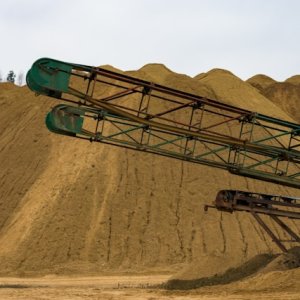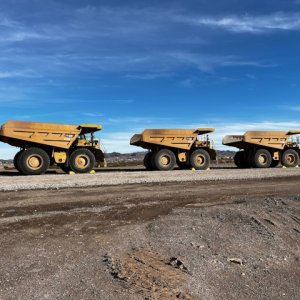
Innovation For Maximizing Productivity, Minimizing Risks
According to the World Gold Council, the AISC of the biggest gold producers in the world in 4Q18 was US$826/oz on average. With the yellow metal’s price hitting a six-year high in 2019 at US$1500/oz, investing in new projects becomes increasingly appealing. But what is driving prices up? The trend can be partly attributed to three factors: geopolitical and economic uncertainty, the US Federal Reserve’s lowering of interest rates and central banks around the world making large gold purchases.
Prominent among the uncertainty-generating factors are the ongoing trade tensions between the US and China. The exchange of tariffs between the Asian and North American giants has lowered business investment in the US, one of the elements that resulted in a slowdown in job creation, according to figures released by the Labor Department in August 2019. Even if the country’s economy is overall healthy, unfavorable job results are one of the key signals analysts look at when evaluating the likelihood of a recession.
More worryingly, the inverted yield curve has entered the bond market stage. Characterized by having lower interest rates in its long end than on its short, this ominous curve suggests that the long-term outlook is unfavorable. On the Chinese side, new US tariffs of 15 percent on about US$110 billion of goods went into effect in September 2019. Chinese exports are now far from the double-digit growth that used to characterize them. Against this economic horizon, investors are turning to gold as a safe-haven investment.
Mexico enters the current context of rising prices as a Top 10 gold producer, with Sonora, Chihuahua and Guerrero in the limelight. Despite the lasting effects of the most recent industry downturn and the perceived uncertainty the López Obrador government has generated during its first year in power, the country boasts some of the world’s most attractive projects. Chief among these is Fresnillo’s Herradura, which produced 474,168 oz in FY2018. Even though gold production at this operation was 6.7 percent lower in 1Q19 than in 1Q18, Herradura remains crucial to Fresnillo’s expectations for 2019. Furthermore, Fresnillo has begun construction of its Juanicipio project, which will be in production by late 2020.
The second-top-producing gold mine in Mexico during 1H19 was El Limón Guajes (ELG), owned by Torex Gold and located in the southern state of Guerrero. As Fred Stanford, president and CEO of Torex Gold points out, “successful projects start with good properties.” A 2.7 grams per ton open pit project that yields higher grades from underground operations, ELG produced 191,515 oz of gold in 1H19.
While bright lights abound in the Mexican industry, social conflicts are one of the hurdles companies often struggle to overcome. A case in point is Peñasquito, located in Zacatecas and owned by Newmont Goldcorp. Considered a world-class gold reserve, Peñasquito is a polymetallic mine holding silver, lead and zinc in addition to gold. In April 2019, a local contractor and members from one of the 25 neighboring communities blocked access to the mine arguing that it had dried up local water reserves. Operations resumed in June of the same year thanks to negotiations led by the federal government. While the company used the downtime to provide maintenance to equipment, losses were massive, and questions remain over what lessons will be learned from the episode.
Putting aside force majeure obstacles to exploration, development and production, “if you do your homework,” points out Rodrigo Barbosa, president and CEO of Aura Minerals, “mining does not have to be too risky.” With respect to diminishing financial risks, Aura Minerals has sealed a three-year offtake agreement with IXM to buy concentrate from the Aranzazu mine in return of a loan for restarting operations at the site. Another example is the royalty agreement between Minera Alamos and Osisko Gold Royalties, whereby the former company will obtain about a quarter of the capital cost return for a 4 percent royalty on its Fortuna mine and thus bring its Santana project to fruition.
Technology, like Torex Gold’s Muckahi, is also key for ensuring the viability of a mining operation. In this respect, Argonaut Gold has implemented electronic blasting at its San Agustin mine in Durango, which has allowed the company to achieve excess capacity of over 20,000t/d. “Instead of executing a single explosion,” says Peter Dougherty, CEO of Argonaut Gold, “electronic blasting enhances crushing throughput by reducing rock size. It is attention to detail that leads to greater efficiency.”
















